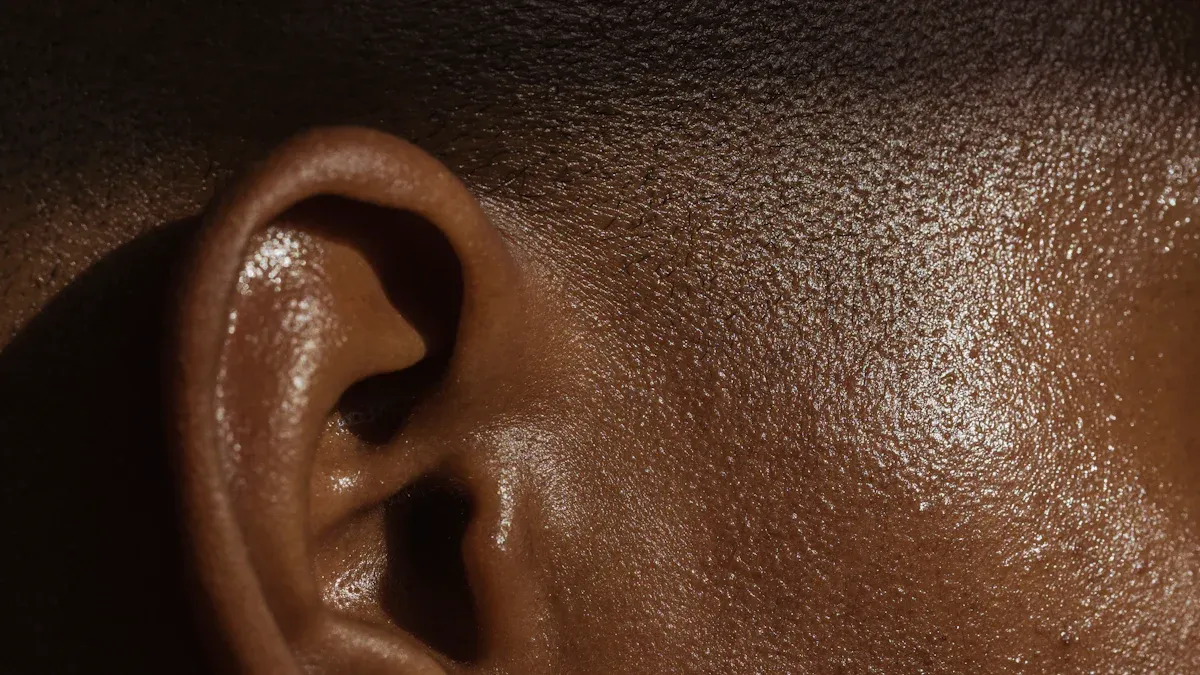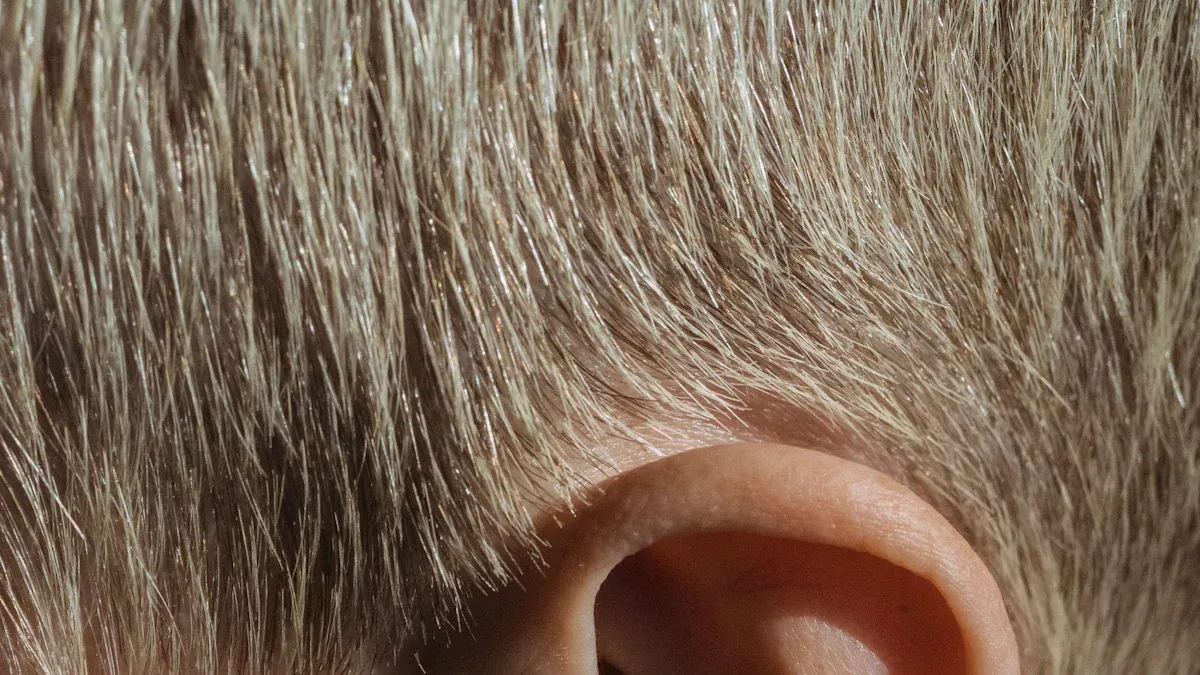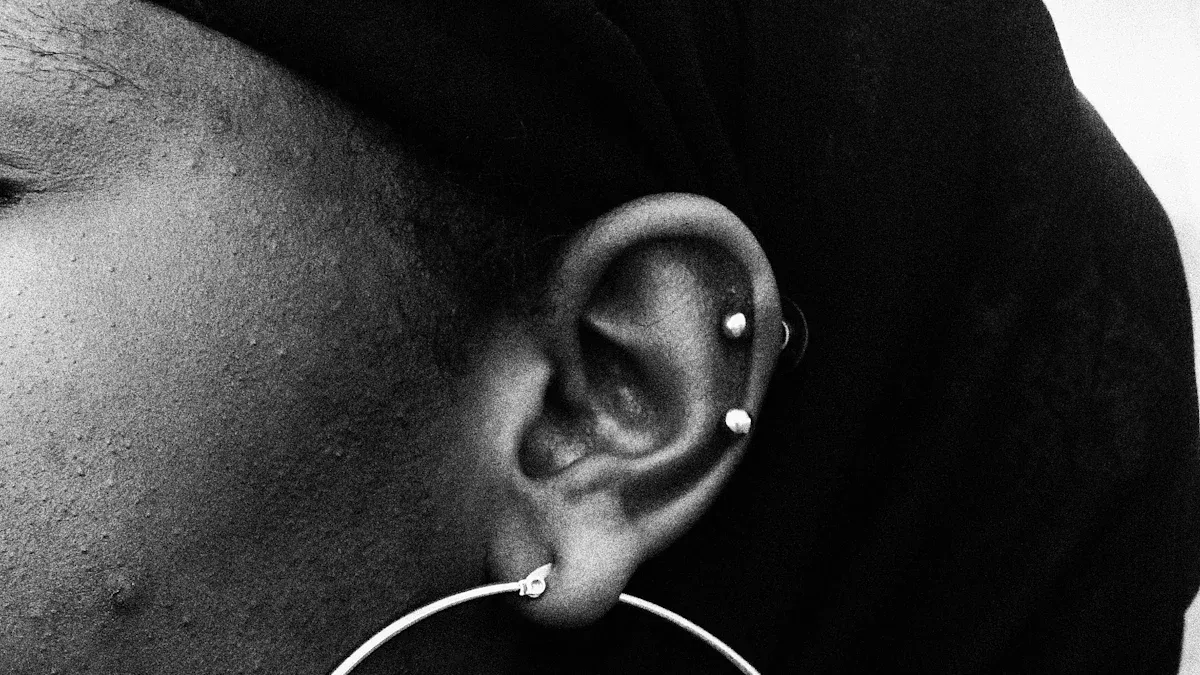What Makes a Flatback Stud Different from Regular Earrings

A flatback stud uses a smooth, flat disc at the back instead of a traditional earring post. You will notice the difference in design right away. The flat disc sits flush against your skin, which helps reduce irritation and makes sleeping more comfortable. People with sensitive ears or cartilage piercings often pick flatback studs for added comfort and security. You can also find them easier to use and less likely to snag on clothing.
Key Takeaways
Flatback studs have a flat disc backing that sits smoothly against your skin, making them very comfortable, especially for sensitive ears or cartilage piercings.
These studs use hypoallergenic materials like titanium or surgical steel, which help reduce irritation and allergic reactions.
Flatback studs stay secure during daily activities and reduce the chance of catching on clothes or hair, making them great for sleeping and sports.
Regular earrings like butterfly backs are easier to put on and take off but may cause discomfort or loosen over time.
Choosing the right earring depends on your needs: pick flatback studs for comfort and security, or regular earrings for style variety and easy use.
Flatback Stud Basics

What Is a Flatback Stud
You might wonder what makes a flatback stud different from other earrings. A flatback stud is a type of earring that uses a flat, smooth disc at the back instead of a pointed or rounded end. This disc sits against your skin and holds the earring in place. You often see flatback studs in professional piercings, especially for cartilage or sensitive areas. Many people choose this style because it feels comfortable and does not poke or press into your skin.
Flatback studs come in many sizes and materials. You can find them in surgical steel, titanium, or even gold. These materials help prevent allergic reactions and make the earring safe for long-term wear. If you have sensitive ears, you may notice less redness or swelling when you use a flatback stud.
Tip: If you sleep with your earrings in, a flatback stud can help you avoid discomfort or pressure marks.
Key Features
Flatback studs offer several unique features that set them apart from regular earrings:
Flat Disc Backing: The flat disc sits flush against your ear, which helps prevent irritation and makes sleeping easier.
Threaded or Push-Fit Posts: You can secure the earring with a threaded post or a push-fit design. Both options keep the earring in place and reduce the risk of losing it.
Hypoallergenic Materials: Most flatback studs use materials like titanium or surgical steel. These materials work well for people with sensitive skin.
Low Profile: The design stays close to your ear, so you are less likely to catch the earring on clothing or hair.
You will find that a flatback stud works well for new piercings, cartilage, or any spot where comfort matters most.
Regular Earring Types

Butterfly and Push-Backs
You probably see butterfly and push-back earrings everywhere. These are some of the most common earring types. A butterfly back, also called a push-back, uses a small metal piece shaped like butterfly wings. You slide this piece onto the earring post from behind your earlobe. The post holds the earring in place, and the butterfly back keeps it secure.
Many stud earrings, like the UH#69 Multicolor Inlaid Butterfly Earrings, use this closure. These earrings often feature a decorative front, such as a butterfly shape with colorful stones like mother of pearl or malachite. The push-back closure makes them easy to put on and take off. You do not need to twist or screw anything. You just push the back onto the post until it feels snug.
Note: Push-back earrings work well for everyday wear. You can find them in many styles and materials. They are simple to use, but sometimes the backs can loosen over time.
Screw-Backs
Screw-back earrings use a different design. The post has threads, like a tiny screw. You twist the backing onto the post until it feels tight. This design gives you extra security, especially if you wear heavy or valuable earrings. You do not have to worry about the earring falling out easily.
Here is a quick comparison between screw-back earrings and flatback studs:
Feature/Aspect | Screw-Back Earrings | Flatback Studs |
|---|---|---|
Design | Threaded post with backing that screws on | Thin, bendable post with a pin-like top that sits flat against the ear |
Security | High security; backing screws tightly, preventing loss | Secure fit, especially good for healing piercings, but less mechanically locked than screw backs |
Suitability | Suitable for heavier or high-value earrings; good for active lifestyles | Ideal for new or cartilage piercings; promotes comfort and hygiene |
Comfort | Can be less comfortable due to threaded post thickness and twisting to remove | Comfortable 24/7 wear; no poking since post sits flat |
Ease of Use | More time-consuming to put on and take off due to twisting | Trickier to insert and remove; may require customization |
Maintenance | Threads may wear down and require replacement | May require trimming or customization at piercing studio |
You might choose screw-back earrings if you want extra security. They stay in place during sports or busy days. Some people find them harder to put on or take off, especially if the threads are small. If you have sensitive ears, the thicker post might feel less comfortable. Always check the threads for wear to keep your earrings safe and secure.
Key Differences
Comfort and Fit
You want earrings that feel good all day. Flatback studs use a flat disc that sits close to your skin. This design helps prevent poking and pressure. Many people say these earrings feel smooth and gentle, even when you sleep. You can find flatback studs in different sizes, like 2mm, 3mm, or 4mm discs. The post length is usually 6mm or 8mm, and the gauge is often 20G or 18G. These measurements help you pick the right fit for your ear.
Aspect | Details |
|---|---|
Materials | Titanium, Yellow gold |
Sizes (Dot Diameter) | 2mm, 3mm, 4mm |
Post Length & Gauge | 6mm or 8mm post length; 20G or 18G gauge |
Closure Type | Push-back closure designed for comfort fit |
Style | Minimalist, hypoallergenic |
Customer Reviews | "Quality is great and they fit perfectly!" (4/5 stars); "Backs are hard to get on and uncomfortable to sleep in" |
Flatback studs use hypoallergenic materials like titanium or gold. These materials help prevent redness and swelling. Regular earrings, like butterfly backs, have a small metal piece that can press into your skin. This can cause discomfort, especially if you wear them overnight. Many people with sensitive ears or cartilage piercings choose flatback studs for this reason.
Tip: If you want to avoid irritation or pressure marks, try sleeping with a flatback stud instead of a regular earring.
Security
You want your earrings to stay in place. Flatback studs use a push-fit or threaded post. This design keeps the earring secure, even during daily activities. The flat disc also helps prevent the earring from catching on hair or clothing. Regular earrings, like butterfly backs, can loosen over time. You might lose an earring if the back slips off. Screw-back earrings offer more security, but they can be harder to put on and take off.
Flatback studs work well for new piercings or cartilage. The secure fit helps protect healing skin. You do not have to worry about the earring falling out while you sleep or move around.
Insertion and Removal
You want earrings that are easy to use. Flatback studs can be tricky to insert at first. The post is thin and sometimes bendable. You may need help from a piercing professional, especially for new piercings. Once in place, the flat disc makes removal simple. You just pull or twist the front piece, depending on the closure type.
Regular earrings, like butterfly backs, are easy to put on and take off. You slide the back onto the post until it feels snug. Screw-back earrings take more time. You twist the back onto the post, which can be hard if the threads are small.
Note: If you want the easiest option for daily wear, butterfly backs are simple. If you want comfort and security, a flatback stud may be the better choice.
Pros and Cons
Benefits of Flatback Studs
You will notice many advantages when you choose flatback studs for your ears. These earrings offer comfort and security that many people appreciate. Here are some of the main benefits:
You can wear flatback studs all day without feeling pressure behind your ear. The flat disc sits smoothly against your skin, making them comfortable for sleeping or wearing headphones.
Many users with sensitive ears say these earrings help reduce irritation. The hypoallergenic surgical steel material works well for people who react to other metals.
You can use flatback studs in different types of piercings, including cartilage. This makes them a versatile choice for anyone with multiple ear piercings.
Reviews show that flatback studs stay secure and rarely fall out. You do not have to worry about losing your earring during daily activities.
The design looks stylish and modern, so you can match them with many outfits.
Thousands of reviews highlight the high satisfaction and popularity of flatback studs. People often mention the absence of discomfort that comes with traditional posts.
Drawbacks
Flatback studs also have some downsides you should consider before making a choice.
You might find them harder to insert or remove, especially if you are new to this style. Sometimes, you need help from a professional to get the right fit.
The flat disc can feel tricky to handle if your fingers are slippery or if the earring is small.
Some people say that the post length or disc size does not always match their ear shape. You may need to try different sizes to find the most comfortable fit.
Flatback studs can cost more than regular earrings, especially if you choose high-quality materials like titanium or gold.
If you want the easiest option for daily wear, you might prefer traditional butterfly backs. Flatback studs work best for comfort and security, but they may take some practice to use.
Choosing Earrings
Best Uses
You want to pick earrings that fit your lifestyle and needs. Flatback studs work best for new piercings, cartilage piercings, or if you have sensitive ears. You can wear them all day and night because the flat back does not poke your skin. Many people choose them for sleeping, sports, or when wearing headphones. If you often catch your earrings on clothes or hair, flatback studs help prevent that problem.
Regular earrings, like butterfly backs or screw-backs, suit healed earlobe piercings. You might pick these for special occasions or when you want to change your look often. They come in many styles and are easy to find in stores. If you want something quick to put on and take off, regular earrings make a good choice.
Tip: If you have a new piercing or plan to keep your earrings in for long periods, try a flatback stud for extra comfort.
Sizing and Placement
Choosing the right size and placement helps your earrings feel and look better. For flatback studs, you need to know the post length and gauge. Most people use a 6mm or 8mm post for cartilage or lobe piercings. The gauge, or thickness, is usually 18G or 20G. Ask your piercer for the best size for your ear.
Placement matters too. For cartilage or upper ear piercings, flatback studs stay secure and do not press into your skin. For lower lobe piercings, you can use either flatback studs or regular earrings. Always check that the earring sits flat and does not pinch your ear.
Piercing Type | Best Earring Type | Recommended Post Length | Gauge |
|---|---|---|---|
Earlobe | Regular or Flatback | 6mm | 20G |
Cartilage/Helix | Flatback | 6mm or 8mm | 18G |
Tragus/Forward Helix | Flatback | 6mm | 18G |
Note: If you feel pain or see redness, try a different size or material. Always clean your earrings and ears to prevent infection.
You now know the key differences between flatback studs and regular earrings. Flatback studs offer comfort and security, especially for sensitive or cartilage piercings. Regular earrings, like butterfly or screw-backs, work well for everyday wear and style changes.
Think about your needs. If you want less irritation and a secure fit, choose flatback studs. For easy use and variety, regular earrings may suit you better. Always pick the option that feels best for your ears and lifestyle.
FAQ
Can you wear flatback studs in any ear piercing?
You can use flatback studs in most ear piercings. They work best for cartilage and new piercings. You may also use them in your earlobes if you want extra comfort.
Are flatback studs safe for sensitive ears?
Yes, flatback studs often use hypoallergenic materials like titanium or surgical steel. These materials help prevent allergic reactions. You can wear them if you have sensitive ears.
How do you clean flatback studs?
Remove the stud gently. Soak it in warm, soapy water for a few minutes. Use a soft brush to clean it. Rinse and dry before putting it back in your ear.
Do flatback studs fall out easily?
Flatback studs stay secure because of their push-fit or threaded design. You do not need to worry about them falling out during daily activities.
Can you sleep with flatback studs?
You can sleep with flatback studs. The flat disc sits close to your skin. This design helps prevent discomfort and reduces the chance of the earring poking you at night.
See Also
Selecting The Ideal Ear Piercing Stud From Top Sellers
Must-Have Flat Buckle Earrings For Comfortable Style Upgrade


